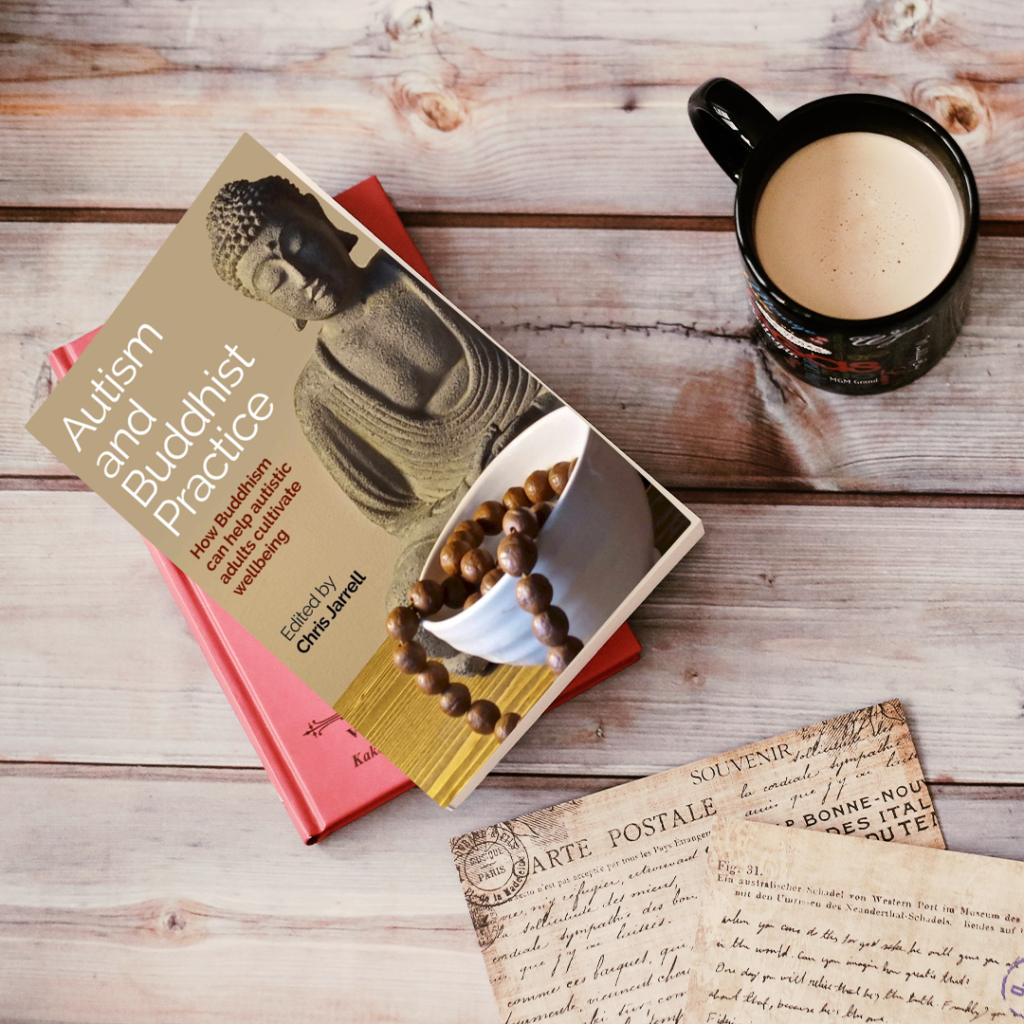How Buddhism Can Help Autistic Adults Cultivate Wellbeing
Autism and Buddhist Practice releases December 21, 2022. You can purchase the book here.

The original intention when planning Autism and Buddhist Practice was to inspire other autistic adults to go beyond the secular use of meditation and mindfulness and explore the foothills of Buddhism. I hoped that they may find a way, as I have, to begin to understand how they might start to break free of negative feelings such as anxiety, depression and low self-esteem, feelings often associated with the lives of autistic people.
The autistic Buddhist contributors to this anthology have clearly achieved the primary goal. They illustrate how to cultivate wellbeing through regular Buddhist practice with the support of a spiritual community. Additionally, Sharon Salzberg, a leading international Buddhist teacher and author of ‘Loving Kindness and Real Change’ read it and wrote:
“Being autistic in a neurotypical world can be filled with challenge. Autism and Buddhist Practice shares the journeys of people who have found a liberating path in the teachings of the Buddha and meditation practices. The stories speak for themselves, and you will find a poignancy and honesty in them that will inspire you.”
The anthology also tells the story of how the contributors have benefitted from becoming part of Buddhist communities, or sanghas, in a way not unlike how some people become part of other religious communities such as a church, a temple or a mosque. Joy Tober is a neurotypical mother to an autistic daughter and also an administrator of a Zen Buddhist temple in the US. She writes: “Peculiar smells, ringing bells, the steady melodic tones of chants, and, of course, lots of bowing. The wonderous world of a Buddhist temple can, to some, be an enchanting and inviting space, but to others it is an unknown and intimidating place of strange customs with unfamiliar forms and traditions.”
But my experience of attending meditation centres has not just been about dealing with the unfamiliar. I have difficulties, like many autistic people, with social communication, language processing, sensory overload and being part of a group. Jane Garratt is an ordained member of the Triratna Buddhist Community. In her piece about overcoming these difficulties and successfully becoming a member of her sangha, she writes:
“To begin with it was hard. This was partly because I found the pressure of people difficult. The sensory input of several people having an animated discussion was challenging. I found myself tensing up and trying to block some of it out.”
So, to help meditation centre directors, we’ve included guidelines for autism sensitive practice in one of the appendices. One of the suggestions listed is:
“Make sure that the ‘go-to’ person in your organization, centre or group has undergone ‘autism awareness’ training.”
When we asked Devin Ashwood, Director of the Gaia House Buddhist retreat centre in the UK, to read and comment on the final manuscript, it became clear that our book had met this secondary goal of encouraging autism sensitive practice in Buddhist communities. He wrote:
“Anyone wanting to better understand … the experience of autistic people accessing Buddhist communities, teaching and practice will find this a fascinating and moving read. Miso soup for the soul!”
So, whether you are an autistic person wanting to explore Buddhism or a member of a Buddhist sangha wanting to improve your community’s autism sensitive practice, this book is for you!
Dr. Chris Jarrell, the editor of Autism and Buddhist Practice, is a retired social work lecturer and university counsellor. He was officially recognised as being autistic at 65 and has been a practicing Buddhist for thirty years. He is interested in hearing about the experiences of other autistic Buddhists and how sanghas are developing their autism sensitive practice. You may contact him on chris@jarrell.karoo.co.uk.